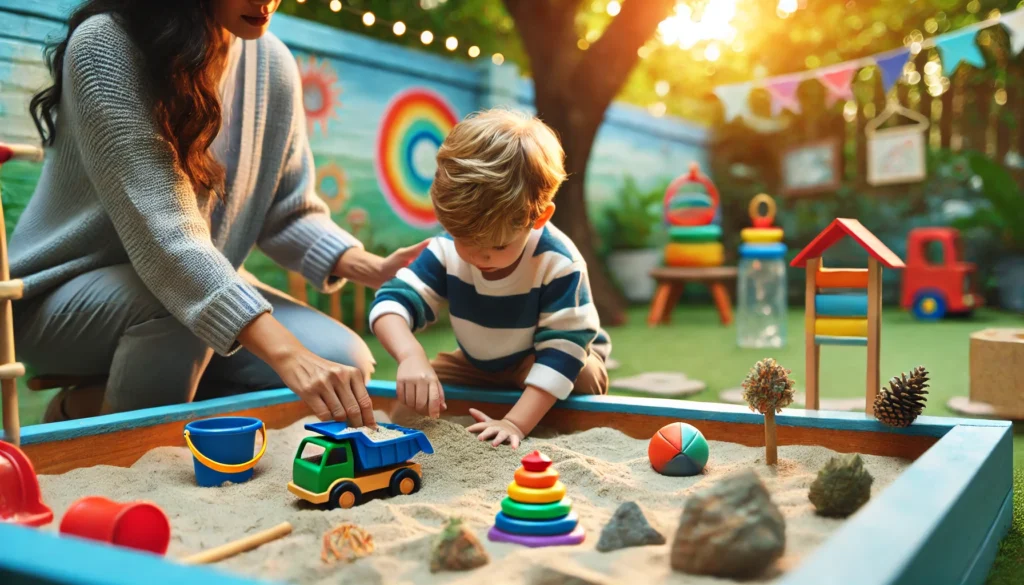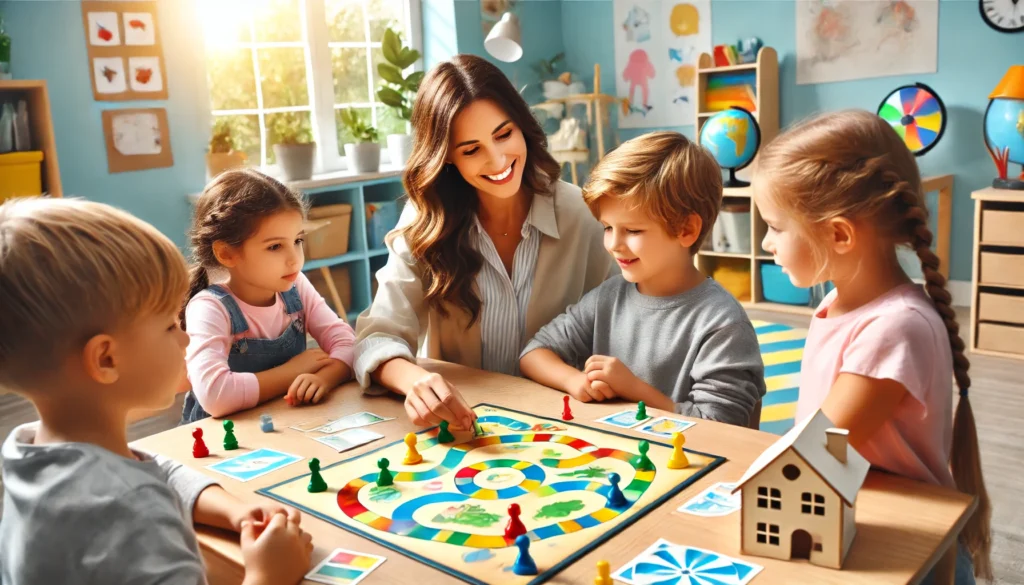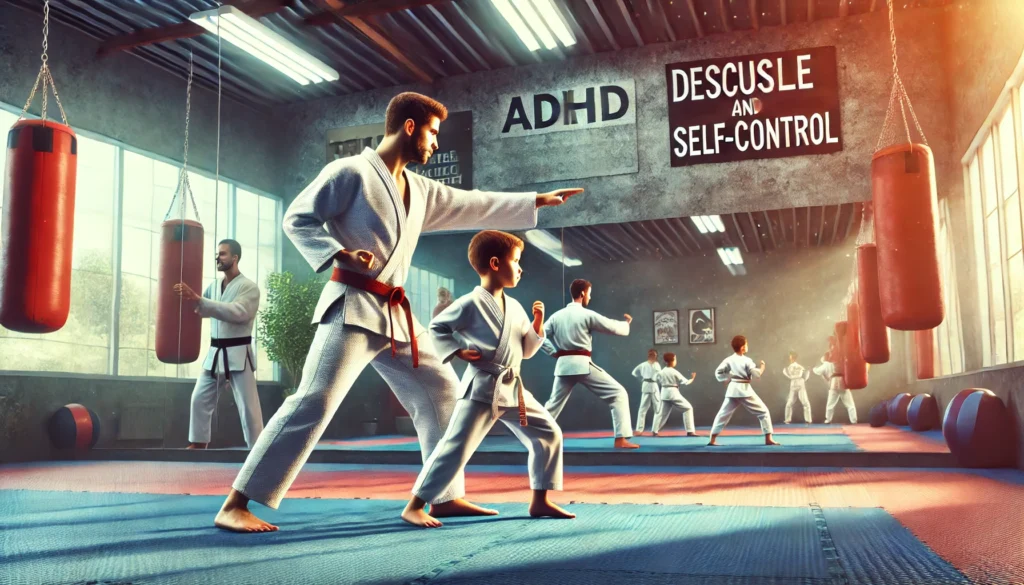Navigating the world of ADHD can be challenging for both parents and caregivers. With an estimated 6.1 million children diagnosed with Attention Deficit Hyperactivity Disorder (ADHD) in the United States alone, understanding how to engage and support these children is more important than ever. In this article, we delve into practical activities that can help channel their boundless energy in constructive ways, providing a platform for growth, learning, and fun.
You may also like: Enhancing Concentration: Strategies for ADHD
Understanding ADHD: A Brief Overview
ADHD, characterized by symptoms such as inattention, hyperactivity, and impulsivity, affects children’s ability to focus and control their behavior. While the exact cause remains unknown, genetic and environmental factors are believed to play significant roles. Historically, ADHD was often misunderstood as simply “bad behavior,” but advances in science have illuminated the neurodevelopmental nature of the condition, allowing for more effective strategies in management and intervention.
The Neurodevelopmental Nature of ADHD
The classification of ADHD as a neurodevelopmental disorder has been a significant shift in understanding. This recognition emphasizes that ADHD is rooted in the brain’s development, not just external behaviors. Research has shown that differences in brain structure and function contribute to the challenges faced by individuals with ADHD. By focusing on these underlying neurological factors, interventions can be more precisely tailored to meet the needs of each child.
Genetic and Environmental Influences
Genetic factors play a substantial role in the development of ADHD, with studies indicating that it often runs in families. However, environmental factors such as prenatal exposure to toxins, premature birth, and low birth weight can also contribute to its onset. Understanding the interplay between genetics and environment can aid in identifying at-risk individuals and implementing early interventions, ultimately improving long-term outcomes for children with ADHD.
Dispelling Myths and Misconceptions
Despite advances in understanding, misconceptions about ADHD persist. It is crucial to dispel myths that label children with ADHD as merely undisciplined or lacking in intelligence. Such misconceptions can lead to stigmatization and inadequate support. By educating the public and fostering a deeper understanding of ADHD, we can create a more supportive environment that acknowledges the unique challenges and strengths of these children.
The Importance of Structured Activities
Children with ADHD thrive in environments that provide structure and clear expectations. Structured activities not only help in channeling hyperactivity but also enhance focus and attention span. These activities can serve as vital tools in teaching children essential skills such as patience, teamwork, and problem-solving.
Establishing a Routine
Creating a consistent daily routine is foundational for children with ADHD. Predictability helps reduce anxiety and allows children to anticipate what comes next, fostering a sense of security. Structured routines should include time for both work and play, ensuring a balanced approach that accommodates the child’s need for both focus and relaxation.
Setting Clear Boundaries and Expectations
Clear boundaries and expectations provide the framework within which children can operate comfortably. By knowing the limits and rules, children with ADHD can better navigate tasks and social interactions. Caregivers should communicate these boundaries clearly and consistently, using visual aids or charts if necessary to reinforce understanding.
Incorporating Breaks and Downtime
While structure is essential, so is the incorporation of breaks and downtime. Children with ADHD can become overwhelmed if constantly engaged without respite. Scheduled breaks allow them to recharge and return to tasks with renewed focus. Activities during these breaks should be calming and enjoyable, such as listening to music or engaging in quiet play, to prevent overstimulation.

Physical Activities
Physical activities are particularly effective for children with ADHD as they allow for the release of excess energy while promoting focus.
The Role of Exercise in ADHD Management
Exercise has been shown to have a positive impact on ADHD symptoms by enhancing mood, improving concentration, and reducing impulsivity. Regular physical activity promotes the release of endorphins, which can help regulate mood and increase the ability to focus. Incorporating exercise into daily routines can significantly benefit children with ADHD, contributing to both physical health and mental well-being.
Team Sports
Engagement in team sports such as soccer, basketball, or gymnastics can be immensely beneficial. These sports not only provide physical outlets but also teach important social skills and the value of teamwork. The structured nature of organized sports can help children with ADHD learn to follow rules and stay focused on tasks.
Martial Arts
Martial arts such as karate, judo, or taekwondo offer a perfect blend of physical exertion and mental discipline. The focus on self-control, respect, and concentration can help children with ADHD develop greater self-awareness and emotional regulation. These practices encourage mindfulness, which can be a powerful tool in managing impulsivity.
Outdoor Adventures
Activities like hiking, rock climbing, or cycling offer great opportunities for children with ADHD to explore the outdoors while engaging in physical exercise. The natural environment can be calming, and the physical challenges presented by these activities can help improve problem-solving skills and build resilience. Outdoor adventures can also foster a love for nature and encourage a lifelong habit of active living.

Creative Activities
Creativity allows children with ADHD to express themselves in non-linear ways, enhancing their ability to think outside the box.
Art and Craft
Art projects, from painting to sculpting, provide a sensory-rich environment that can captivate a child’s attention. The tactile experience of creating something can be both satisfying and therapeutic, offering a sense of accomplishment upon completion.
Music and Dance
Music and dance can serve as captivating outlets for children with ADHD. Learning an instrument or engaging in dance classes can improve concentration, rhythm, and coordination. The repetitive nature of music practice is particularly beneficial in enhancing memory and focus.
Drama and Theater
Participating in drama and theater can be an excellent way for children with ADHD to channel their creativity. Acting allows them to explore different personas and scenarios, which can enhance empathy and social understanding. Theater activities also encourage collaboration, helping children develop communication skills and confidence in public speaking.
Writing and Storytelling
Writing and storytelling provide an avenue for children with ADHD to express their thoughts and emotions creatively. Encouraging them to write stories or keep a journal can help improve their writing skills and boost their self-esteem. Storytelling sessions, where they can share their narratives, also enhance their verbal communication abilities and foster a sense of community.
Cognitive Activities
Activities that challenge the mind can help in improving attention span and problem-solving skills.
Puzzles and Brain Games
Puzzles, Sudoku, and brain teasers are excellent for developing cognitive skills. They encourage children to think critically and enhance their problem-solving abilities. These activities can be particularly engaging when presented as fun challenges or competitions.
Coding and Robotics
For tech-savvy kids, coding and robotics offer an exciting way to channel creativity and improve focus. These activities foster logical thinking and perseverance, as children work through complex problems to achieve their goals.
Educational Board Games
Board games that require strategic thinking and planning, such as chess or checkers, can be beneficial for children with ADHD. These games promote patience and turn-taking, essential skills that can be transferred to other areas of life. They also provide a fun and interactive way for children to engage with family members or peers.
Memory and Concentration Exercises
Memory games and concentration exercises are specifically designed to enhance cognitive functions. Activities such as matching games or memory cards can improve recall abilities and attention span. Regular practice of these exercises can lead to significant improvements in a child’s ability to focus and retain information.
Tips for Parents and Caregivers
While activities play a crucial role in managing ADHD, the approach to these activities is equally important. Here are some practical tips:
Set Clear Expectations
Before starting any activity, set clear, achievable goals. This helps children understand what is expected and provides a sense of direction.
Offer Positive Reinforcement
Celebrate achievements, no matter how small. Positive reinforcement encourages children to keep trying and reinforces the desired behavior.
Be Patient and Flexible
Children with ADHD might not always respond as anticipated. Patience and flexibility in adapting activities to suit their needs can make a significant difference.
Communicate Openly
Maintaining open communication with children about their feelings and experiences can help build trust and understanding. Encourage them to express their thoughts and listen actively to their concerns. This dialogue can provide insights into their preferences and guide you in selecting activities that align with their interests.
Foster a Supportive Environment
Creating a supportive and nurturing environment is crucial for children with ADHD. Encourage their efforts and provide reassurance when they encounter challenges. A positive and understanding atmosphere can help boost their confidence and motivation, making it easier for them to engage in various activities.
Collaborate with Educators and Professionals
Working closely with educators and healthcare professionals can provide valuable insights into effective strategies for managing ADHD. Collaboration ensures consistency in approaches both at home and in educational settings, enhancing the overall support system for the child. Regular communication with teachers and therapists can help monitor progress and make necessary adjustments to interventions.

Future Directions in ADHD Management
As our understanding of ADHD continues to evolve, so do the strategies for managing it. Future trends suggest a greater focus on personalized approaches, integrating technology, and holistic methods, such as mindfulness and nutrition, into traditional treatment plans. The role of nootropics and biohacking in enhancing cognitive function in children with ADHD is also an area of growing interest.
Personalized Treatment Plans
The future of ADHD management lies in personalized treatment plans that cater to the unique needs of each child. Advances in genetic research and brain imaging may enable healthcare providers to tailor interventions based on individual neurobiological profiles. Personalized approaches can optimize the effectiveness of treatments, minimizing side effects and improving overall outcomes.
Integration of Technology
Technology is set to play a pivotal role in ADHD management, with innovations such as digital therapy platforms and mobile applications. These tools can provide real-time feedback, track progress, and offer interactive exercises designed to improve focus and attention. Virtual reality and gamification are also being explored as engaging ways to support cognitive development in children with ADHD.
Holistic Approaches
Holistic approaches that incorporate mindfulness, nutrition, and lifestyle changes are gaining traction in ADHD management. Mindfulness practices, such as meditation and yoga, can help children develop self-awareness and emotional regulation. Nutritional interventions, focusing on balanced diets and specific nutrient supplementation, may also support cognitive function and behavior in children with ADHD.
The Role of Nootropics and Biohacking
The exploration of nootropics and biohacking represents a frontier in ADHD management. Nootropics, often referred to as “smart drugs,” are substances that can enhance cognitive function. While their use in children requires careful consideration and research, they hold potential for complementing traditional therapies. Biohacking, which involves optimizing biological processes through lifestyle and technological interventions, may also offer new avenues for supporting children with ADHD.
Conclusion
Helping children with ADHD navigate their world requires understanding, patience, and creativity. By incorporating engaging and structured activities into their routine, we can provide them with the tools they need to thrive. Whether through sports, arts, or cognitive challenges, these activities offer a pathway to channel their energy constructively, fostering growth and development. As we continue to learn more about ADHD, the potential for new and innovative approaches to support these children is boundless.
Embracing Scientific Insights
By embracing both scientific insights and practical applications, we can create environments where children with ADHD not only cope but excel. Continuous research and education in ADHD can lead to more effective strategies that empower children to reach their full potential. Staying informed about the latest developments allows caregivers to make well-informed decisions regarding their child’s care.
Individualized Journeys
Remember, the journey with ADHD is unique for every child, and finding the right mix of activities can make all the difference in their development and happiness. Tailoring approaches to suit individual preferences and strengths ensures that children remain engaged and motivated. By respecting each child’s individuality, we can foster a supportive and inclusive environment that celebrates their achievements.
The Role of Community and Support Networks
Community and support networks play a vital role in the journey of children with ADHD. Connecting with other families and support groups can provide valuable resources, shared experiences, and encouragement. Together, communities can advocate for better understanding and acceptance of ADHD, promoting a culture of inclusivity and support for all children.
Further Reading:
Attention-deficit/hyperactivity disorder (ADHD) in children
Important Note: The information contained in this article is for general informational purposes only, and should not be construed as health or medical advice, nor is it intended to diagnose, prevent, treat, or cure any disease or health condition. Before embarking on any diet, fitness regimen, or program of nutritional supplementation, it is advisable to consult your healthcare professional in order to determine its safety and probable efficacy in terms of your individual state of health.
Regarding Nutritional Supplements Or Other Non-Prescription Health Products: If any nutritional supplements or other non-prescription health products are mentioned in the foregoing article, any claims or statements made about them have not been evaluated by the U.S. Food and Drug Administration, and such nutritional supplements or other health products are not intended to diagnose, treat, cure, or prevent any disease.


